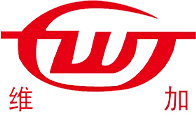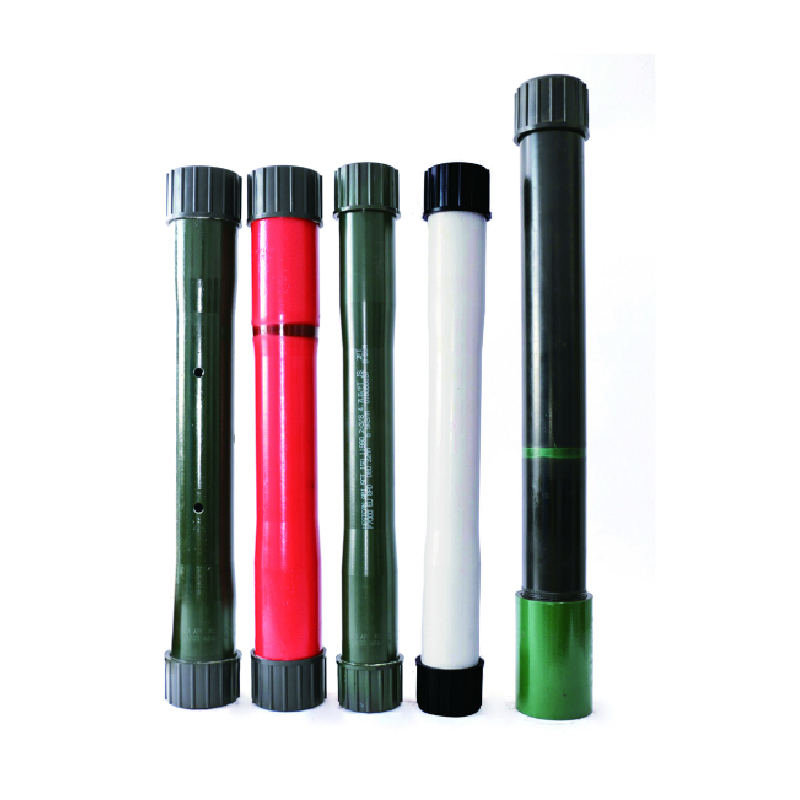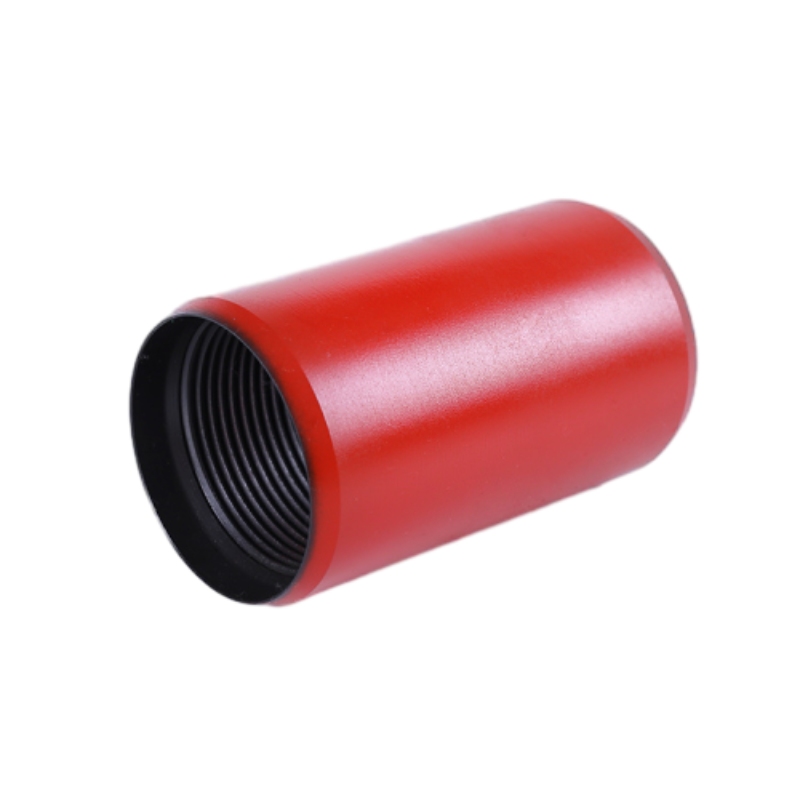Tubing Crossover: Durable, Efficient Drilling & Pump Seating Solutions
The Pivotal Role of Tubing Crossovers in Modern Drilling and Production
In the intricate world of oil and gas exploration and production, the integrity and efficiency of the tubing string are paramount. A seemingly small yet critically important component is the tubing crossover. This specialized adapter facilitates the seamless connection between components with differing thread types, diameters, or pressure ratings, ensuring the continuous and reliable flow of operations. From deep-sea drilling to unconventional resource extraction, the correct selection and deployment of these components directly impact operational safety, efficiency, and overall project economics.
Modern drilling and completion projects demand components that can withstand extreme conditions, including high pressures, corrosive environments, and elevated temperatures. The evolution of tubing crossover technology is closely tied to advancements in materials science, precision engineering, and rigorous quality control, ensuring that these critical links perform flawlessly under stress.
Industry Trends and the Evolving Demand for Crossover Solutions
The global energy landscape is continually shifting, pushing the boundaries of drilling and production technologies. Key trends driving the demand for advanced tubing crossover solutions include:
- Deepwater and Ultra-Deepwater Drilling: Operations in these challenging environments require crossovers capable of handling immense hydrostatic pressures and dynamic loads, often necessitating specialized corrosion-resistant alloys.
- Unconventional Resource Development: Horizontal drilling and multi-stage fracturing operations demand robust and reliable connections for extended laterals, where component integrity is crucial for success.
- Enhanced Oil Recovery (EOR): Projects utilizing steam injection, CO2 flooding, or chemical floods require crossovers that can resist harsh chemical attack and extreme temperatures.
- Automation and Digitalization: The integration of advanced sensors and real-time monitoring systems requires components that are compatible with intelligent well technologies, often leading to more compact and robust designs.
- Environmental Regulations: Increasing scrutiny on environmental impact drives demand for leak-proof connections, extended service life, and materials with lower environmental footprints. This often involves innovative seal designs and superior machining tolerances.
These trends underscore the critical need for expertly engineered tubing crossover subs and related components like `crossover sub drilling` tools and `drill pipe crossover` connections, which must deliver uncompromising performance under increasingly severe conditions. The complexity of modern well designs, often incorporating various downhole tools, also highlights the importance of reliable `pump seating nipple` integrations that rely on precision crossover connections.

Understanding the Tubing Crossover: Technical Overview
A tubing crossover serves as a fundamental adapter in downhole assemblies, bridging the gap between components with dissimilar connections. Its primary function is to provide a reliable, pressure-tight seal and mechanical integrity between two distinct threaded elements within a tubing string or tool assembly.
Structure and Parameters
Typically, a crossover consists of a single piece of machined metal with male or female threads on each end. Key parameters include:
- Thread Types: Common threads include API EUE (External Upset End), NUE (Non-Upset End), LTC (Long Thread Casing), STC (Short Thread Casing), BTC (Buttress Thread Casing), and various proprietary premium connections. A crossover connects one type to another (e.g., EUE to BTC).
- Outer Diameter (OD) & Inner Diameter (ID): These dimensions must be carefully matched to the surrounding tubing and downhole tools to ensure proper fit and flow characteristics.
- Material Grade: High-strength alloy steels like AISI 4140, 4340, 8630, or specialized corrosion-resistant alloys (CRAs) such as Duplex Stainless Steel, Super Duplex, or Nickel-based alloys (e.g., Inconel) are commonly used, chosen based on anticipated well conditions (H2S, CO2, chlorides).
- Pressure and Temperature Ratings: Critical for safety and performance, these ratings dictate the maximum operational limits of the component.
The Manufacturing Process of a High-Quality Tubing Crossover
The production of a reliable tubing crossover is a multi-stage process demanding stringent quality control at every step. This ensures the final product meets the high demands of the petrochemical and other critical industries.
- Material Selection: Begins with certified raw materials, typically high-grade alloy steel bars (e.g., AISI 4140, 4340, 8630) or CRAs, selected based on specific application requirements for strength, toughness, and corrosion resistance. Materials must adhere to standards like API Spec 5CT/5B or NACE MR0175 for sour service.
- Forging: The raw steel bars are hot-forged to refine grain structure, improve mechanical properties, and achieve the initial shape, enhancing strength and durability.
- Heat Treatment: Forged components undergo precise heat treatment processes (e.g., quenching and tempering, normalizing) to achieve desired hardness, yield strength, and impact resistance. This process is critical for the component's service life and performance under stress.
- CNC Machining: State-of-the-art CNC (Computer Numerical Control) machines are employed for high-precision turning, milling, and threading. This ensures exact dimensional tolerances, perfect thread forms (e.g., API 5B standards), and smooth internal finishes for optimized flow. The precision of threading is paramount for sealing integrity.
- Surface Treatment (Optional): Depending on the application, surfaces may be treated for enhanced corrosion resistance (e.g., phosphating, nickel plating) or wear resistance.
- Inspection and Testing:
- Dimensional Inspection: Verifying all critical dimensions, including thread profiles, using calibrated gauges.
- Non-Destructive Testing (NDT): Magnetic particle inspection (MPI), ultrasonic testing (UT), and liquid penetrant inspection (LPI) are performed to detect internal and surface flaws.
- Hydrostatic Pressure Testing: Each crossover is typically hydrostatically tested to pressures exceeding its working pressure rating to confirm leak integrity and structural soundness, adhering to API Spec 5CT standards.
- Material Certification: Verification of material properties through chemical analysis and mechanical testing (tensile, impact, hardness).
- Coating & Packaging: Application of protective coatings and secure packaging to prevent damage during transit and storage.
These processes ensure compliance with international testing standards such as ISO 9001 (Quality Management Systems), ANSI, and specifically API (American Petroleum Institute) standards like API Spec 5CT for Casing and Tubing, API Spec 7-1 for Rotary Drilling Equipment, and API Spec 6A for Wellhead and Christmas Tree Equipment. The typical service life of a well-maintained crossover can extend for many years, directly contributing to energy saving through reduced downtime and replacements, and offering superior corrosion resistance in aggressive downhole environments.
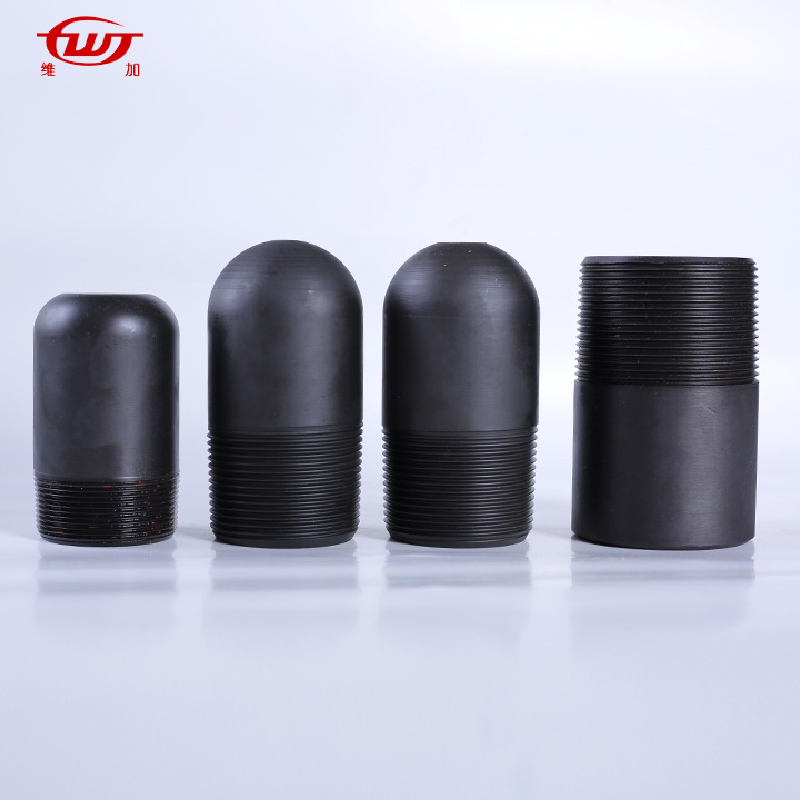
Technical Specifications and Performance Parameters
Choosing the correct tubing crossover relies heavily on understanding its detailed technical specifications. The following table illustrates typical parameters for high-performance crossovers:
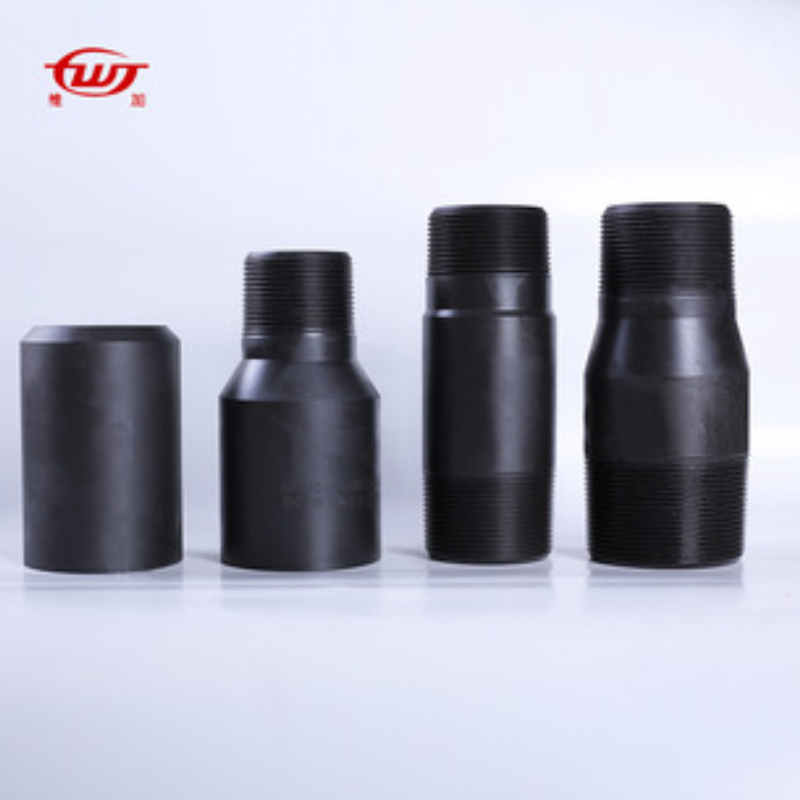
Application Scenarios and Industry Focus
The versatility of tubing crossover components makes them indispensable across a broad spectrum of industrial applications. They are critical in ensuring fluid compatibility and mechanical linkage in complex systems.
Target Industries:
- Petrochemical and Oil & Gas: The most prominent sector, spanning drilling, completion, production, and workover operations. This includes `crossover sub drilling` for connecting drill collars to drill pipe, and specialized crossovers for downhole tools like `pump seating nipple` assemblies.
- Geothermal Energy: Handling high-temperature, high-pressure, and often corrosive geothermal fluids.
- Metallurgy (Mining): Used in specialized drilling applications for mineral exploration and extraction where robust connections are required.
- Water Supply & Drainage: In large-scale industrial and municipal projects, especially for deep well applications requiring durable and reliable pipe connections.
Typical Application Scenarios:
- Connecting Different Tubing Strings: Facilitating the transition between different sizes or thread types of production tubing.
- Adapting Downhole Tools: Enabling the integration of various downhole tools (e.g., packers, safety valves, logging tools) into the main tubing or casing string by providing the necessary thread compatibility. This is crucial for `crossover drilling tool` assemblies.
- Drill String Assemblies: Used as `drill pipe crossover` subs to connect different components of a drill string, such as drill pipes, drill collars, and heavy-weight drill pipes, ensuring consistent mechanical integrity.
- Well Intervention and Workovers: Providing versatile connection points for coiled tubing operations, wireline tools, or fishing assemblies.
Demonstrated Advantages:
- Energy Saving: Optimized internal profiles reduce turbulence and pressure drop, leading to more efficient fluid flow and lower pumping energy requirements over the life of the well.
- Corrosion Resistance: Utilization of CRAs and specialized coatings significantly extends component life in aggressive corrosive environments, reducing the need for costly replacements and minimizing environmental risks from leaks.
- Enhanced Safety: Precision engineering and rigorous testing ensure leak-proof connections, minimizing risks of blowouts or environmental contamination.
- Operational Flexibility: Allows for greater adaptability in well design and tool deployment, facilitating complex completions and interventions.
Vendor Comparison: Selecting the Right Tubing Crossover Provider
When procuring tubing crossover solutions, comparing vendors is crucial. Key differentiators include manufacturing quality, material certifications, customization capabilities, and after-sales support. Below is a comparative overview of typical vendor offerings:
WJ Petroleum differentiates itself through a steadfast commitment to superior material quality, precision engineering, and extensive customization capabilities, ensuring that each tubing crossover meets the exact specifications and demanding operational requirements of our clients.

Customized Solutions for Specialized Operations
The dynamic nature of B2B oil and gas operations often necessitates solutions that go beyond standard catalog items. WJ Petroleum excels in providing customized tubing crossover designs tailored to unique project requirements. This includes:
- Bespoke Thread Combinations: Developing crossovers for unconventional or legacy thread forms that are not standard API, ensuring compatibility with existing equipment.
- Exotic Material Selection: Utilizing specialized corrosion-resistant alloys (CRAs) or high-strength steels for extreme H2S/CO2 environments, ultra-high pressure/temperature wells, or highly abrasive conditions.
- Optimized Internal Profiles: Customizing internal bore diameters and geometries to minimize pressure drop and maximize flow efficiency for specific fluid characteristics or production rates.
- Integrated Features: Incorporating features such as non-rotational devices, pressure ports, or integral subs for specific downhole tool requirements.
- Special Lengths and Diameters: Manufacturing crossovers to specific length requirements to fit confined spaces or accommodate complex well architecture.
Our engineering team collaborates closely with clients from conceptual design through manufacturing and testing, ensuring that each customized solution is meticulously engineered, rigorously tested, and delivered to specification.
Application Case Studies
Real-world application demonstrates the critical impact of high-quality tubing crossover components:
Case Study 1: Deepwater High-Pressure, High-Temperature (HPHT) Well
Challenge: A major operator required a connection solution for a deepwater HPHT well (20,000 psi, 350°F) where standard API connections were inadequate for sustained integrity. The assembly included a `pump seating nipple` requiring a robust connection to a larger diameter tubing string.
Solution: WJ Petroleum engineered a custom `tubing crossover` from a specialized Super Duplex Stainless Steel (UNS S32750) with proprietary premium threads on both ends. The design incorporated enhanced seal geometries and was subjected to API PR2 (Performance Requirement 2) testing to validate its integrity under simulated HPHT conditions.
Result: The customized crossover provided flawless performance throughout the well's lifespan, preventing costly leaks and ensuring uninterrupted production, significantly reducing non-productive time (NPT) associated with connection failures.
Case Study 2: Unconventional Shale Gas Lateral Extension
Challenge: An operator was extending laterals in a challenging shale play, requiring reliable connections for their `drill pipe crossover` and other drilling tools in a highly corrosive and abrasive environment. Standard `crossover drilling tool` components experienced premature wear and connection failures.
Solution: WJ Petroleum supplied `drill pipe crossover` subs manufactured from 8630 modified alloy steel, featuring an optimized thread design to resist galling and a proprietary hard-banding application on wear surfaces. Each sub underwent advanced NDT and a cyclic fatigue test program.
Result: The enhanced crossovers extended the operational life of the drilling string by 40%, significantly reducing tool replacement costs and improving drilling efficiency in extended reach laterals. The operator reported a noticeable reduction in connection-related failures.
Frequently Asked Questions (FAQ)
Conclusion: Precision and Reliability for Critical Connections
The selection and deployment of high-quality tubing crossover components are fundamental to the success and safety of drilling and production operations. As industry demands evolve towards deeper, hotter, and more corrosive wells, the importance of robust, precisely engineered crossovers becomes even more pronounced. WJ Petroleum stands as a trusted partner, providing advanced `crossover drilling tool` solutions that meet and exceed industry standards, driven by a commitment to excellence in material science, manufacturing precision, and unparalleled customer support.
By investing in superior `drill pipe crossover` technology, operators can achieve enhanced operational efficiency, extend equipment service life, and minimize environmental risks, ultimately contributing to more sustainable and profitable energy extraction.
References
- American Petroleum Institute (API). Various Standards and Recommended Practices, including API Spec 5CT, 5B, 7-1, and Q1.
- NACE International. MR0175/ISO 15156: Petroleum and natural gas industries—Materials for use in H2S-containing environments in oil and gas production.
- ISO 9001: Quality management systems — Requirements.
- SPE (Society of Petroleum Engineers) Journal articles on advanced tubular connections and downhole tool design.
-
Tubing Crossover - API Compatible, Custom Sizes, In StockNewsNov.10,2025
-
Tubing Coupling | High-Strength, Leak-Proof Steel CouplingsNewsNov.10,2025
-
Wholesale API Threading Casing Coupling | API 5CT, Fast ShipNewsNov.10,2025
-
Pup Joint Supplier | API Certified, Custom, Quick ShipNewsNov.10,2025
-
Pup Joint Manufacturers | Precision Machined, Fast DeliveryNewsNov.10,2025
-
Tubing Coupling | Precision Steel, Leak-Proof, Fast DeliveryNewsNov.03,2025
